Opinion
A brief history of two monk activists
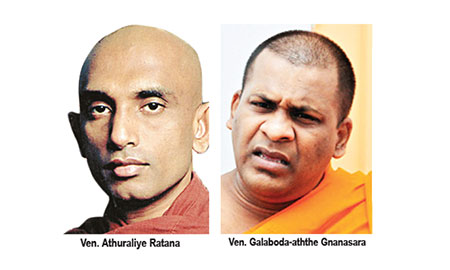
By ROHANA R. WASALA
In my opinion, Ven. Athuraliye Ratana and Ven. Galaboda-aththe Gnanasara were following two different lines of activism in the arena of inclusive nationalism until their recent joint pratfall in the mire of dirty politics. The first appears to be a shrewd politician who is trying to get involved in issues that should not be politicized; the second is a sincere idealist passionately committed to a worthy cause, but constantly defeated by his own uncontrolled temper and unguarded tongue.
Though both are university products, their areas of study were not the same. The first studied philosophy at Peradeniya, while the second focused on Buddhist studies at the Kelaniya and Sri Jayawardanepura universities. Ven. Ratana was among the founder members of the Jathika Hela Urumaya party formed in 2004. The formation of the party was broadly a response to Buddhist-targeted unethical conversions and Christian fundamentalist activity issues. He was one of the nine members of the party returned to parliament under the UPFA at the election held that year. Ven. Gnanasara founded the Bodu Bala Sena in 2012, mainly to counter the steady growth of multifarious Islamic extremist groups that eclipsed the still active Christian fundamentalist activities in the public consciousness. Defensive reaction by the victimised majority to the tyranny of racist minority politics of Tamil separatists has long been misinterpreted in the biased global media and in the international (Western) diplomatic space relating to Sri Lanka, as unwarranted Sinhalese discrimination against Tamils in general. In the same prejudiced way, they have successfully demonized Buddhist monk activists who are actively opposing both covert and open religious fundamentalist aggression, and this has affected the honest but naive Gnanasara Thera more than it has the worldly-wise Ratana Thera. It looks as if the former is now caught in the vice-grip of a stratagem set up by the latter.
Ven. Galaboda-aththe Gnanasara Thera’s Bodu Bala Sena organization was formed in 2012 for the purpose of exposing the subversive activities of Christian and Islamic fundamentalist sects, and alerting the authorities and the Ven. Mahanayakes to the danger posed to the whole nation by them. He endeavoured to do this in the calm and composed way characteristic of a Buddhist monk, without expecting any reward in return (= ‘nissaranadyashayen’ as he used to put it). He has had no political or other materialistic ambitions. For many years he tried to explain his case to politicians in power and those in the opposition to address the problem without politicizing it. In a few instances, peaceful marches organized by the BBS led to clashes between Buddhists and Muslims, for which only the former were blamed. In the biased media, Muslims were portrayed as the victims and the Buddhists as the aggressors. The true situation was otherwise. Buddhists never initiated any violent incidents. Some unruly elements from the Muslim side started the trouble. For example, in 2014, some young Muslim men threw stones from the roof of a mosque at a peaceful Buddhist procession at Aluthgama and this led to violence, which quickly spread to a number of other towns (including Panadura, Beruwala, Welipenna, etc) in south-western Sri Lanka. There were social media videos showing this provocative act – stone throwing by some young Muslims – at the time. On that occasion, thousands of innocent Muslims and and similarly innocent Buddhists were affected and their shops, houses, and places of worship were attacked. Though the then Mahinda Rajapaksa-led government did its best to stop the violence and restore normalcy, the incidents were not adequately investigated, and not enough was done to clear the name of the BBS, which was solely blamed for all that happened. The involvement, on that occasion, of a crafty politician in the garb of a patriotic ally of President Mahinda Rajapaksa, but with a personal agenda of his own that was inimical to the latter’s policies, added a political tone to the naive monks’ (Ven. Gnanasara’s) peaceful protests, and biased reportage turned him into a bogeyman.
The leaders of successive governments didn’t take Ven. Gnanasara seriously enough, because they thought that if they took any decisive action, on his word, against the handful of powerful communalists among minority politicians who, intentionally or unintentionally, either facilitated or provided a cover for questionable acts such as anti-Buddhist subversion, illegal felling of trees in the state forest reserve in Wilpattuwa, alleged settling of illicit Muslim immigrants from certain Islamic countries in the same reserve, encroaching on and even vandalizing historic Buddhist places of worship in the North and East, and so on, they would lose the support of the mainstream Christian and Muslim communities, which being minorities, naturally tend to form themselves into ‘block vote’ bases at the instance of opportunistic politicians. The majority of ordinary Muslims do not want to support communalist politicians, but they are often in the thrall of those politicians, because of the latter’s ability to ‘deliver’, whichever major party or alliance happens to be in power.
The polity consisting of the majority community (Sinhalese) cannot behave like this. In any country, it is normal for the majority community to be unconsciously undermined by a false sense of security vis-a-vis the minorities, whereas the latter feel a bit paranoid with or without justification. The Sinhalese voting public are always divided into rival parties, and at parliamentary elections, under the existing electoral system, it is extremely rare that a major party is able to form a viable government without the assistance of one or more minority parties; a situation where the latter become kingmakers despite the insignificance of their numerical strength. The slightest movement towards redressing the balance in favour of the disadvantaged majority Sinhalese in any anomalous situation, would invariably earn the individual Sinhalese activist or the group behind that initiative the label racist or extremist or chauvinist. So, the Sinhalese (Buddhists, particularly) get criticised and condemned as racists, tribalists, etc., while in reality being victims of the racism, fanaticism, and extremism of groups within the minorities. This applies to Ven. Gnanasara as well, who is engaged in the performance of the duty that has historically devolved on him as a Buddhist monk, a duty that is above politics, pragmatic or otherwise.
Ven. Gnanasara Thera approached the Most Ven. Mahanayakes in Kandy and pleaded with them beseechingly, not once, but several times, and explained to them this problem with video evidence of outrageous Buddhism-bashing speeches of Wahabist zealots, to no avail. Once, a few years ago, the monk led a large procession of well disciplined young activists (more than 2000) from Getambe to the Sri Dalada Maligawa, and then they proceeded to the Malwatu Vihara, the monastery of the Ven. Mahanayake of the Malwatte Chapter. The Mahanayake Thera, at first, very unfairly, refused him an audience. Later, having found that they were not ready to leave without seeing him, he allowed Ven. Gnanasara and a few of his companions to come before him. Nothing resulted from that meeting.
The BBS leader wanted the Maha Sangha to play their historic role as Buddhist monks without stooping to politics, and was determined to resolve the Islamic extremist problem through rational dialogue with the participation of the clergy of other religious groups (which is what he has always wanted to do because even groups of traditional Muslims, he claims with evidence, approached him and pleaded with him to rescue them from Wahabist and Salabist extremists). Unlike him Ven. Athuraliye Ratana Thera seems to be adopting a political approach in his one man political crusade against Islamist extremists. Just before the recent 2020 general election Ven. Gnanasara gave up his non-political stance, probably under someone’s persuasion.
The April 21, 2019 Easter Sunday terrorist bombings led to a heightening of public awareness about the Islamist problem that had been brought to light by monk activists before; the issue began to receive attention from the clergy of other religions , as well. The then UNP national list MP Ven. Ratana took the opportunity to visit the construction site of an alleged Sharia university in Batticaloa in the east, being built without proper authorization from the Sri Lankan government and financed by suspicious foreign sources; he succeeded in forcing the Yahapalana government of which he was a prominent member at the time, to suspend the construction work for the time being. Under the same pretext, he staged a ‘fast unto death’ in the vicinity of the Dalada Maligawa, in Kandy. It was tantamount to claiming exclusive credit for creating a groundswell of popular opposition against Islamist extremism. I, as a journalist, wrote at the time that his maverick intervention in the latter instance (the uncalled for gatecrashing of the protest movement with a fast) was bound to undermine the emerging unity among the Maha Sangha in the face of adventitious ISIS terror.
I expressed the opinion that the activism of Buddhist organizations, including Ven. Gnanasara Thera’s BBS, facilitated this awakening among the Buddhist clergy and that it could help form a united Sanga community that spoke with one voice on matters that came within their purview. But it appeared that Hon MP Ven. Ratana, most probably, wanted to edge out the leaders of that movement and assume control of it, with a view to playing a powerful dual role in the corresponding political power structure that would evolve: the traditional role of a representative of the Maha Sangha as the guardian of the Buddhist moral-cultural establishment, the nation (the people), and the country (territory) of unitary Sri Lanka on the one hand, and the acquired role of party politician on the other.
Thus, Ven. Ratana seemed to be trying to play a two-in-one function combining both those roles. However, the role traditionally assigned to the Maha Sangha has been above that of the king or, in modern times, the government. The ruler assigned a higher seat to the monk and paid him obeisance. The monks didn’t dabble in policy making or in governing, but advised the ruler on how to rule in the righteous way according to the Dasa Raja Dharma or the Ten Duties of the King. The question of a problematic religion state relationship did not arise. Buddhism is not a political religion. The only politics it advocates is democracy. The Maha Sangha is a perfectly democratic social entity. In the modern world it is considered essential to keep religion and the state separate from each other in order to ensure democratic governance of the Western type (This is more relevant to societies dominated by political religions.) So every secular democracy can be regarded as broadly consistent with Buddhist principles and vice versa.
Ven. Ratana cannot provide the political leadership that the country needs, nor can he provide any spiritual leadership either, because of his attempted dabbling in statecraft and priestcraft simultaneously. A Buddhist monk is not likely to make a good president or prime minister. The impression among political analysts is that Ven. Ratana is a typical politician and a pragmatic political strategist (Pragmatism is amoral, or rather not moral, but it is part and parcel of realpolitik that a politician can rarely avoid). That he is clever at dissembling was evident to the less gullible onlookers during his ‘fast unto death’ before the Sri Dalada Maligawa (He took care not to die, by drinking water, as the Catholic priest who joined the fast revealed, probably inadvertently). It was obvious that he was not alone in staging the show. The Ven. Mahanayake Theras severely criticised him after the event. He had approached them beforehand and told them about his intention of staging a fast, but cunningly he did not reveal the venue to them. Had they been told that he was going to have his fast in the hallowed precincts of the Maligawa, they would not have permitted him to do so; that would have been a serious setback for him.
Because of Ven. Gnanasara’s exertions, unprecedented prospects of different religious communities standing up to the common enemy of murderous religious extremism were brightening. We were witnessing the first stirrings of a spring in the Sangha Sasana, that is potentially freed from abominable Nikaya divisions, which are based on caste, in stark contradiction of the compassionate Buddha’s teaching. Ven. Gnanasara made arguably the largest contribution to this most positive development. However, his entanglement with Ratana Thera has cost him his reputation.
The monks do not relish the idea of establishing a Buddhist theocracy, which is, in any case, inconceivable, considering the spirit of absolute democracy that characterizes the Maha Sangha. Buddha praised the system of government followed by the Licchavis of Vesali of his time, who were his relations of his own warrior caste. It was a form of a republican system of government by common consent, an ancient version of what we call democracy today. However, the monks’ staying above mundane politics doesn’t mean that they don’t have anything to do with secular politics (or how the country is run). Buddhist monks in the majority Buddhist Sri Lanka have been the custodians of the country’s Buddhist cultural heritage for over two thousand two hundred and fifty years according to written records. By the way, which other country in the world can boast of such a long unbroken singular spiritual cultural tradition? Shouldn’t the United Nations Organization make special recognition of this fact in the name of human civilization, which is currently being threatened with annihilation by murderous religious extremism?
By the influence of its humane spiritual values, Buddhism ensures, not only the peaceful coexistence of the various communities who live in the country, but also the unhindered enjoyment and protection of their freedom of belief and worship. However, Buddhists will not accept the alleged divine right of adherents of any particular religion to kill or persecute those who don’t share their beliefs and practices, or to discriminate against them. What Ven. Gnansara proposed to the Maha Sangha is that they unite and provide the necessary moral guidance for the rulers to rule the country righteously, whatever political ideologies they subscribe to. This does not involve any violation of secular democracy in governance. He says that the Sri Lankan society today is sick in every way. To heal the society, the Maha Sangha must unite and provide guidance to the rulers. He quotes the Buddha’s teaching: ‘sukho sanghassa samaggi’ ‘Happy is harmony among the Sangha’.
Ven. Gnanasara Thera predicts that when the Maha Sangha are united, the politicians and the people will fall in line, and a suitable lay political leadership will emerge. Ven. Ratana’s intervention in his capacity as an MP monk probably produced some limited positive results in the immediate context, but in the long run, it will be counterproductive. He is only doing more of what he did in the past. And we all know what he did has led to. His involvement will be an obstacle to the functioning of the lay political leaders that the whole country approves of as being capable of fixing not only the problem of Wahabist incursion, but also the infinitely greater issue of external interference in the country’s domestic affairs that, in the first place, as the media reveal, inflicted it on our nation under the Yahapalanaya. It is not that he is not aware of what he is doing. We may be sure that he will make amends in some way.
Opinion
Dr Don Robert Seneviratne
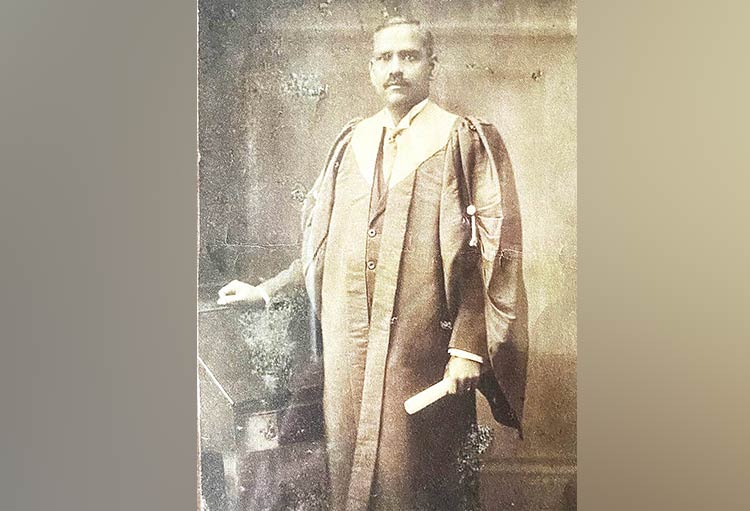
My father Don Robert Seneviratne was born in 1887. Having had his early education at Prince of Wales College, Moratuwa, he entered the Medical School in Colombo and passed out with a LMS (Licentiate of Medical School). After a few years he proceeded to the Universities of Edinburgh and Glasgow earning their Licentiates.
When he returned to Ceylon and to his birthplace Kaluwana in Homagama, he was warmly welcomed by the people as being the first person from the village to have gone abroad and qualified in the UK. My mother recalled that he was welcomed by pandals of plaintain trees.
After a long tenure in government service as a District Medical Officer in places like Deniyaya, Elpitiya, Pimbura and Galle where he served as Judicial Medical Officer, he was appointed Police Surgeon to the Police Department in Colombo. He died suddenly in 1946 after a heart attack and was accorded a Police funeral.
This is a very belated tribute to my father. Whatever I am today and whatever I may have achieved in life is due to the very close and devoted upbringing given to me by my father and my mother, Laura Seneviratne.
May they both attain the Supreme Bliss of Nibbana.
Nihal Seneviratne
Opinion
How to write a research paper

Key Steps and Best Practices
BY Gamini Keerawella
Conducting research and writing a research paper are distinct yet interdependent exercises. In the Social Sciences, a single research project can yield multiple papers, each exploring different dimensions of the central inquiry. A well-executed research project does not automatically translate into a well-crafted research paper. Writing is an art—one that requires practice, patience, and a structured approach. Transforming research findings into a coherent, compelling, and readable paper demands adherence to established methodologies and best practices. Over time, researchers have identified key steps that capture best practices, ensuring clarity, logical flow, and academic integrity. This essay outlines these essential steps for effectively structuring and producing a research paper. However, this should not be taken as a rigid straitjacket; rather, it serves as only a guide to writing a research paper. Before writing your essay, it is essential to identify your main audience. Additionally, the structure of your research paper may require slight adjustments depending on where it will be presented. Many annual research conferences organised by Sri Lankan universities follow a rigid, standardised format, requiring you to fit your content accordingly. However, my focus here is to provide guidelines for writing research articles intended for research journals and the academic sections of newspapers, where writers have more freedom to develop their ideas and structure their content.
Title of Research Paper
The first step in writing a research paper is selecting an appropriate title to align with the scope and central argument of the paper. In turn, a well-crafted title serves as a guiding framework, helping to structure paper’s arguments effectively. When formulating a title, clarity and precision should be the primary focus. It is important to use clear, straightforward language and avoid jargon or overly complex terminology in title that might confuse readers. Additionally, the title should be concise—an excessively long title can dilute the focus, while an overly short one may lack essential details. A compelling title should capture the reader’s interest and encourage further exploration of the paper. Depending on the nature of the research, the title can be framed as a statement or a question, capable of stimulating curiosity and prompting engagement with the content.
Objective of the Paper
First and foremost, you must have a clear understanding of the paper’s objective(s). The next step in writing a research paper is clearly presenting the research question/issue that you are going to explore. If the issue is too broad, the paper may turn into a general essay; if too narrow, it may not give you necessary depth to develop a strong argument. Striking a balance is essential. This step is crucial as it distinguishes research essay from a general essay. A well-defined research problem provides direction for the study by establishing its scope—determining what aspects will be covered and what will be excluded. Rather than simply restating the central research problem, focus on identifying and refining a specific question that your paper aims to address. It is imperative that the research problem be clear, precise, and researchable, enabling systematic investigation and meaningful analysis. Additionally, it is essential to briefly explain the significance of the problem—why it is being raised, and its contribution to the existing body of knowledge. A well-defined research problem not only justifies the study but also provides a strong foundation for developing a compelling argument and drawing evidence-based conclusion
Concepts
When writing a research paper, it is essential to have a clear understanding of the analytical concept that forms the foundation of your argument. Analytical/theoretical concepts will help you to organise your evidence and develop your argument. The level of detail and the way you introduce this concept will depend on your target audience and the nature of your subject matter. Your research may either develop a new analytical framework or test the validity of an existing concept through empirical data. In either case, offering a concise overview of the core idea behind the concept is crucial. This helps establish a solid analytical foundation for your argument and ensures that readers can follow the reasoning that underpins your research. Providing such context also allows for a more meaningful engagement with the data and enhances the overall coherence of your study. Depending on your research focus and publication venue, you may briefly outline your data collection methods.
Scope/Parameters of the Paper
In a research paper, you are not supposed to cover every thing related to the topic. It is essential to clearly define the scope in alignment with the paper’s objectives, as this is fundamental to a focused and coherent analysis. The scope outlines the boundaries of the essay; what aspects will be covered and what will be excluded. This helps in maintaining clarity, avoiding unnecessary diversions, and ensuring that the study remains aligned with its intended purpose. The parameters vary according to the objective (research problem) and the subject mater of the paper. It is essential to have a clear idea of the extent to which the paper will examine its core themes, concepts, or issues. You need to decide whether the focus is theoretical, empirical, or policy-oriented or hybrid. Depending on the research it is better to indicate the period under study, whether it spans a specific historical timeframe. Clearly stating what aspects will not be covered—and justifying these exclusions—helps set realistic expectations for readers while acknowledging constraints such as data availability, methodological limitations, or thematic relevance. Defining the scope with precision ensures that the analysis remains structured and aligned with the core research questions.
Structure into Main Sections/Parts
Once you have precisely defined the scope of your paper and clarified the key concepts, the next crucial step is organising it into well-structured sections. Dividing your paper into clear parts strengthens its structure, enhances readability, and ensures logical argumentation. Outlining the main sections at the beginning helps guide the reader and sets clear expectations. The number of parts will depend on the scope of the paper. However, excessive segmentation can overwhelm the reader and disrupt coherence. It is essential to strike a balance, ensuring each section serves a distinct purpose without unnecessary fragmentation. Each section should logically build on the previous one, reinforcing the central thesis while maintaining clarity. A well-organised structure ensures that every section contributes meaningfully to the argument, enhancing both clarity and persuasiveness.
Subheadings
A key element of a research essay is the use of subheadings in major sections. Subheadings structure a research paper by breaking main sections into manageable parts, improving logical flow and guiding the reader through the content. Well-crafted subheadings enhance coherence by ensuring smooth transitions between ideas and maintaining a clear organisational hierarchy. They enhance the readability of the paper by providing a clear sense of what each subsection covers. To be effective, subheadings should be thoughtfully designed, directly connected to the main heading, and reflective of the paper’s structure. A strong subheading is both descriptive and aligned with the section’s content, improving clarity and readability. By using subheadings strategically, a research paper becomes more accessible, well organized, and engaging for the reader.
Building Argument
The most important aspect of a research paper is the construction of a clear and compelling argument. Unlike a general essay, which often serves a descriptive purpose, a research paper is fundamentally analytical and seeks to establish a position on a specific issue. This requires not only a logical structure but also a deliberate effort to develop an argument step by step.
A well-structured paper does not automatically make for a strong research paper. Structure serves as a framework for presenting an argument cogently, but it is the depth of reasoning, coherence of ideas, and evidence-based support that determine the strength of the argument. Without a clear argument, even the most well organised paper remains ineffective.
A research paper does not aim to cover every possible aspect of a subject. Instead, it requires a focused approach, identifying a specific issue or problem that is outlined at the outset. This issue forms the foundation of the argument, guiding the research and analysis. Building an argument is a step-by-step process. The argument must stem from a clearly defined research question or problem statement. Understanding previous explanations or theories related to the issue helps situate the argument within the broader discourse. The paper must take a clear stance—whether by introducing a new perspective or challenging an existing one. Logical reasoning, empirical data, and theoretical insights must be used to substantiate claims. The argument must be developed progressively, ensuring that each section builds upon the previous one in a logical sequence.
Presenting information alone does not constitute a research essay; rather, research is about constructing a well-reasoned argument. Whether by advancing a new explanation or critically engaging with existing ones, argumentation lies at the heart of scholarly inquiry. A structured approach enhances clarity, but the true strength of a research paper depends on the depth of its argument and the rigor of its analysis. Research does not always require formulating an entirely new argument; at times, critically examining and questioning prevailing explanations drive scholarly progress. Challenging an established thesis can pave the way for academic breakthroughs.
Organising Evidence
The strength and validity of an argument depend on how effectively one presents evidence to support it. Organizing evidence in a coherent manner is, therefore, a fundamental aspect of a research essay. Without sufficient and well-structured evidence, mere interpretation risks being perceived as opinionated rhetoric rather than rigorous academic analysis. Conversely, evidence without interpretation remains sterile and directionless. A well-balanced integration of evidence and interpretation is the hallmark of sound scholarship.
Beyond the mere presence of evidence, its organisation and presentation are equally crucial in strengthening an argument. In critically examining and presenting evidence, two key factors must be considered: authenticity and relevance. Authenticity ensures that the evidence is credible and verifiable, while relevance determines its applicability to the specific focus of the paper. The relevance of evidence is contingent on the research question; therefore, selecting appropriate supporting materials is essential.
Relying on a single piece of evidence is a novice mistake, as it weakens the foundation of an argument, leaving it vulnerable to scrutiny. While a primary or principle piece of evidence may serve as the central pillar of the argument, it must be substantiated with supplementary and corroborative evidence. This layered approach not only reinforces the argument but also demonstrates a comprehensive understanding of the subject matter.
Additionally, presenting counter-evidence—evidence that supports opposing interpretations—is an effective scholarly practice. Engaging with alternative explanations and refuting them through critical analysis enhances the credibility of the argument, showcasing a well-rounded and intellectually rigorous approach. A research essay, therefore, is not merely about advocating a viewpoint but about engaging with evidence in a nuanced and methodical manner to construct a compelling, defensible argument.
Language Clarity
Language is the primary vehicle for communicating structured thoughts and research findings. The clarity, precision, and coherence of writing directly impact how effectively arguments are conveyed and understood. A well-articulated argument, supported by clear and logical reasoning, strengthens the credibility of scholarly work. Conversely, ambiguity, redundancy, or poor organisation can undermine even the most compelling research.
In academic discourse, language is not just a tool but also a benchmark for evaluating scholarly work. Clarity and precision in writing are crucial for publication, as journals expect adherence to strict linguistic and stylistic standards. Academic writing defined by its formal structure, evidence-based reasoning, and objective tone, demands conciseness and readability. Frugal word use prevents redundancy and sharpens arguments, ensuring ideas remain clear and impactful.
For non-native English speakers, writing in English demands careful attention to linguistic accuracy and coherence. Since English is not our first language, we must be especially mindful of grammar, vocabulary, and syntax to ensure precision and professionalism. Good writing is, at its core, the art of rewriting. The process of drafting, revising, and refining is indispensable. Thorough editing before submission is essential to meet academic standards and effectively convey the intended message
Referencing in Academic Writing
Referencing is a crucial component of academic writing. It ensures the integrity of scholarly work by acknowledging previous research and writings. Proper referencing not only upholds academic honesty but also helps to avoid plagiarism, which is considered intellectual theft. Presenting someone else’s ideas, arguments, or written sections as your own without proper acknowledgment constitutes plagiarism, a serious ethical and academic offense.
There are two primary methods of referencing: direct quotations and footnotes/endnotes. A direct quotation involves using the exact words from a source to substantiate or support an argument. When incorporating direct quotations into your writing, they must be enclosed in quotation marks and followed by a relevant citation. In some cases, direct quotations can also be used to present an opposing argument before refuting it. However, excessive reliance on direct quotations should be avoided, as academic writing values analysis and synthesis over mere reproduction of existing material. In some instances, rather than quoting directly, you may need to paraphrase a long section from another source to maintain conciseness and clarity. Paraphrasing involves restating the ideas of others in your own words while preserving their original meaning. Even when paraphrasing, it is essential to provide a reference to the source to give due credit to the original author.
It is important to note that commonly accepted facts and general truths do not require citations. These include widely known historical dates, scientific laws, and universally acknowledged principles. However, when in doubt, it is always best to provide a citation to maintain academic credibility.
There are several established citation styles used in academic writing, including APA (American Psychological Association), MLA (Modern Language Association), and Chicago style. The choice of citation style depends on the academic discipline and institutional guidelines. Regardless of which citation style you follow, it is important to be consistent and avoid mixing different styles within a single document.
Conclusion
A conclusion serves as the logical summation of a paper, bringing the discussion to a meaningful close. While there is no universal formula, its structure and content depend on the nature of the essay. The primary purpose is to address the central research question or issue posed at the outset, offering a final perspective based on the arguments and evidence presented. Rather than summarizing every point, the conclusion should reinforce the most significant arguments supporting the thesis, ensuring clarity without redundancy. It is not the place to introduce new points, counterarguments, or evidence but should build on the existing discussion to provide a sense of closure. While it does not introduce new arguments, it can briefly suggest directions for future research, especially if there are unresolved questions or broader implications. A well-structured conclusion leaves a lasting impact, reinforcing key insights while maintaining logical coherence.
Bibliography
A bibliography is an essential component of any research paper, providing a comprehensive list of the sources that contributed to the development of the argument. It serves multiple purposes, including giving credit to original authors, ensuring transparency, and allowing readers to verify and further explore the sources used.
If you relied on specific databases to locate sources, these should be mentioned, especially if they played a key role in shaping your research. This helps demonstrate the depth of your literature review and the credibility of your sources. Every source that appears in footnotes or endnotes must be included in the bibliography. This ensures consistency and proper acknowledgment of the works that directly informed your study. Any book, article, or document from which you have taken direct quotes or paraphrased ideas should be listed in the bibliography. This is crucial for maintaining academic integrity and avoiding plagiarism. As with references, there are three main bibliography styles, and the chosen style must align with the one used for footnotes.
Beyond direct citations, it is useful to include major works that influenced your arguments. These may not be explicitly quoted but were significant in shaping your understanding of the subject. While compiling the bibliography, it is important to exercise selectivity and sound judgment. Not every source consulted needs to be included—only those that substantially contributed to the research. The goal is to maintain a focused, relevant, and authoritative list of references rather than an exhaustive or redundant compilation.
(This is based on a discussion the writer had with its Research Staff of the Bandaranaike Centre for International Studies (BCIS) on 13 June 2024.)
Opinion
How Chinese capacity building and USAID slush funds reveal ideological biases of our media
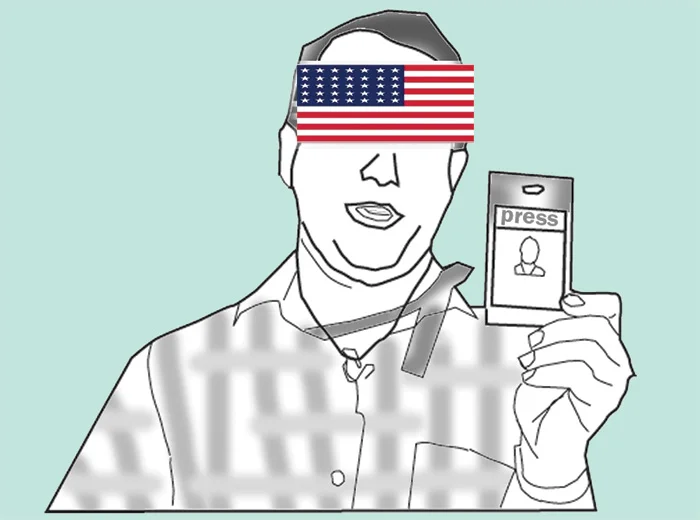
by Shiran Illanperuma
On 9 February, an article titled “Sri Lanka’s Undisclosed Pact with China Worries Media”, which was produced by the Union of Catholic Asian News, was carried in the Sunday Island. The article, which is full of speculation and insinuations, refers to the fact that several MOUs on capacity building are to be signed between Sri Lankan and Chinese state-owned media institutions.
One of the journalists quoted in the article raises concerns over Chinese media being “state-controlled”, while another suggested that partnerships with China would “compromise local media integrity and align it with foreign interests”. The irony is that this news comes in the wake of recent revelations by the Trump administration’s newly minted Department of Government Efficiency, that USAID spent 7.9 million US dollars to train Sri Lankan media.
It reveals a lot about biases in the media profession that partnerships with institutions from China, a rising Global South country that is constantly demonised by the Global North’s media monopolies, is seen as something dangerous and worth campaigning against. Meanwhile, the influx of millions of dollars from a US institution with deep roots in Cold War counterinsurgency and regime change operations is tacitly ignored or underplayed by the so-called defenders of free media.
Double standards
The double standard here is the implicit notion that training, grants, and technical support is ideologically and politically neutral (or positive even!) when the Global North does it. However, if China (or for that matter Russia, Iran or some other designated enemy of the Global North) does it, then of course it is immediately associated with mal-intent. This double standard is nothing but a modern-day manifestation of the trope of oriental despotism.
The easy retort to concerns over media partnerships with China is the simple observation that contemporary China does not seek to export its ideology and institutions. On the other hand, there is ample academic and journalistic evidence on the role of USAID in promoting US interests during the Cold War and beyond. Consider the example of Cuba, where The Guardian reported that the USAID funded a Twitter-like social network to promote content that would encourage the formation of “smart mobs” to “renegotiate the balance of power between state and society”.
There are other examples of USAID’s handiwork in the Global South. One is the case Dan Mitrione, a USAID contractor who worked for the agency’s Office of Public Safety Program in the 1960s. Mitrione oversaw the arming and training of scores of police officers under right-wing governments in Brazil and Uruguay. Mitrione would become notorious for training police officers in the art of torture, with classes on human anatomy, and electroshock and psychological torture.
Decolonising media
The Egyptian Marxist Samir Amin characterised imperialism through five key prongs of domination, one being the control over knowledge. This is why the countries of the Non-Aligned Movement pushed for a New World Information and Communication Order at the 19th Congress of UNESCO in 1970. This process culminated in the 1980 UNESCO report titled ‘Many Vices One World’ which was demonised as an attack on ‘free press’ by the US and UK. The report pointed out the alarming concentration and commercialisation of media, and recommended that countries strengthen their independence and self-reliance. This report so outraged the US that it was one of the reasons for its withdrawal from UNESCO in 1983.
What is striking is how little things have changed in the sphere of media and communications. With the fall of the Soviet Union and China’s shift away from attempting to export revolution, the entire edifice of the Global North’s media and communications monopoly built up during the Cold War continues basically unchallenged today. In addition to traditional media, there is now the dominance of new media companies such as Meta and X (formerly Twitter), which are private monopolies with opaque algorithms, access to sensitive user information from around the world, and close ties to the US government.
In the context of the Global North’s enduring hegemony over media and communication, South-South cooperation in media capacity building is something to be welcomed as a breath of fresh air.
Two traditions
Our understanding of the role of the media in society remains deeply Eurocentric, shaped as it is by the mythology of liberalism where so-called free (i.e. privately owned) media emerged as mouthpiece of the emerging capitalist class in their struggle against feudalism. However, the other side of this coin is the long history of private media in information warfare and suppressing working class and national liberation movements around the world.
The historical role of the media at the weaker links of capitalism is decidedly different. In many of these cases media emerged in the process of decolonisation, and in direct opposition to colonial pedagogy. In China for example, the Xinhua News Agency has its roots as the Red China News Agency in the Ruijin Soviet established by the Communist Party of China in Jiangxi in 1931. The agency was basically forged in fire during the Long March and, following establishment of the People’s Republic of China in 1949, had to function more like an embassy due to the diplomatic isolation imposed by the Global North.
In Sri Lanka too, the true history of the media and its oligarchic owners is yet to be written. While there are certainly shortcomings in the way the nationalised media was managed, there is also an untold story of how important state-owned media was for the proliferation of popular education, health awareness programmes, and uplifting cultural programming for the masses.
In this latter tradition, the state-ownership of media is inseparable from the process of constructing a new society from the detritus of imperialism. How do we even begin to compare this ‘illiberal’ tradition of media that is deeply tied to projects of anti-colonial and socialist state building, to the ‘liberal’ media monopolies of the West which have constantly waged hybrid wars against sovereign states, from Cuba to Venezuela, Iraq to Libya, and yes, even Sri Lanka.
One need only look at recent bias reporting on the US-backed Israeli genocide in Gaza to understand the true face of the Global North’s liberal media monopolies.
(Shiran Illanperuma is a journalist and political economist. He is a researcher at Tricontinental: Institute for Social Research and a co-editor of Wenhua Zongheng: A Journal of Contemporary Chinese Thought. He is also a co-convenor of the Asia Progress Forum. He has an MSc in Economic Policy from SOAS, University of London.)
(Asia Progress Forum is a collective of like-minded intellectuals, professionals, and activists dedicated to building dialogue that promotes Sri Lanka’s sovereignty, development, and leadership in the Global South. They can be contacted at asiaprogressforum@gmail.com).
-
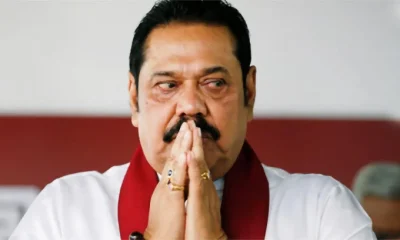
 Features6 days ago
Features6 days agoDon’t betray baiyas who voted you into power for lack of better alternative: a helpful warning to NPP – II
-

 News4 days ago
News4 days agoCommercial High Court orders AASSL to pay Rs 176 mn for unilateral termination of contract
-
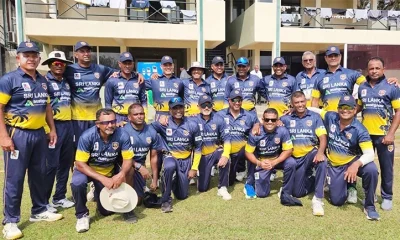
 Sports3 days ago
Sports3 days agoSri Lanka face Australia in Masters World Cup semi-final today
-
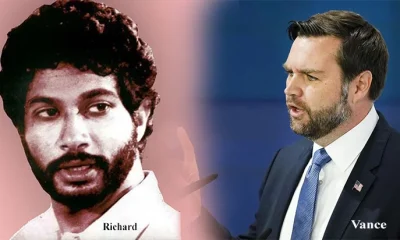
 Features6 days ago
Features6 days agoTwo films and comments
-
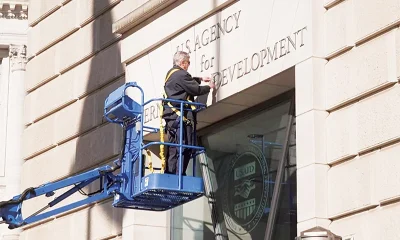
 Features5 days ago
Features5 days agoUSAID and NGOS under siege
-

 Features5 days ago
Features5 days agoDoing it in the Philippines…
-

 News3 days ago
News3 days agoCourtroom shooting: Police admit serious security lapses
-
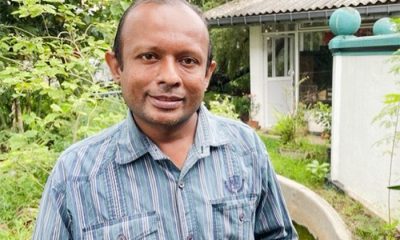
 News4 days ago
News4 days agoFSP lambasts Budget as extension of IMF austerity agenda at the expense of people











